
The massacres of Poles in Volhynia and Eastern Galicia, were carried out in German-occupied Poland by the Ukrainian Insurgent Army, or the UPA, with the support of parts of the local Ukrainian population against the Polish minority in Volhynia, Eastern Galicia, parts of Polesia and Lublin region from 1943 to 1945. The peak of the massacres took place in July and August 1943. Most of the victims were women and children. Many of the Polish victims regardless of age or gender were tortured before being killed; some of the methods included rape, dismemberment or immolation, among others. The UPA's actions resulted in between 50,000 and 100,000 deaths.

The Ukrainian Insurgent Army was a Ukrainian nationalist paramilitary and later partisan formation founded by the Organization of Ukrainian Nationalists on October 14, 1942. During World War II, it was engaged in guerrilla warfare against the Soviet Union, the Polish Underground State, Communist Poland, and (sometimes) Nazi Germany. The insurgent army arose out of separate militant formations of the Organization of Ukrainian Nationalists—Bandera faction, other militant national-patriotic formations, some former defectors of the Ukrainian Auxiliary Police, mobilization of local populations and others. The political leadership of the army belonged to the OUN-B. It was a perpetrator of the ethnic cleansing of Poles in Volhynia and Eastern Galicia, murdering tens of thousands of Poles and Jews, mostly women and children. Its official date of creation is 14 October 1942, the day of the Intercession of the Theotokos feast. From December 1941 to July 1943, the Ukrainian People's Revolutionary Army shared the same name.
The Organization of Ukrainian Nationalists was a Ukrainian ultranationalist and terrorist organization established in 1929 in Vienna, as a union between the Ukrainian Military Organization and smaller, mainly youth, radical nationalist right-wing groups. The OUN was the largest and one of the most important far-right Ukrainian organizations operating on the territory of the Second Polish Republic in the interwar period.
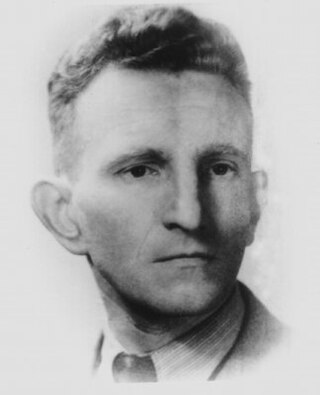
Roman-Taras Yosypovych Shukhevych, was a Ukrainian nationalist and a military leader of the Ukrainian Insurgent Army (UPA).
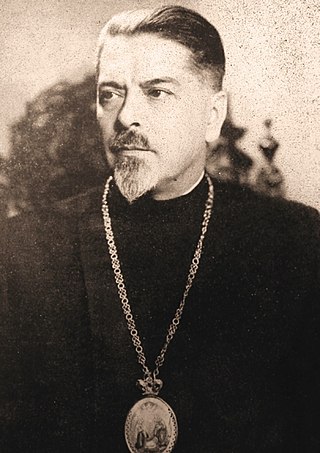
Patriarch Mstyslav, secular name Stepan Ivanovych Skrypnyk, was a Ukrainian Orthodox Church hierarch. He was a nephew of Symon Petliura.
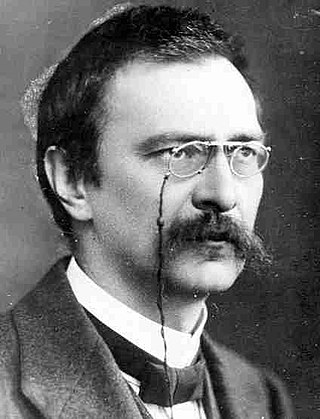
Stanisław Grabski was a Polish economist and politician associated with the National Democracy political camp. As the top Polish negotiator during the Peace of Riga talks in 1921, Grabski greatly influenced the future of Poland and the Soviet Union.
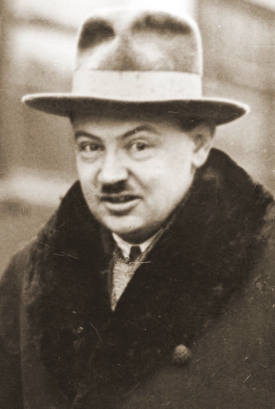
Tadeusz Ludwik Hołówko, codename Kirgiz, was an interwar Polish politician, diplomat and author of many articles and books.

Archduke Wilhelm Franz of Austria, later Wilhelm Franz von Habsburg-Lothringen, also known as Vasyl Vyshyvanyi, was an Austrian archduke, a colonel of the Ukrainian Sich Riflemen, a poet, and a member of the House of Habsburg-Lorraine.

The Treaty of Warsaw of April 1920 was a military-economical alliance between the Second Polish Republic, represented by Józef Piłsudski, and the Ukrainian People's Republic, represented by Symon Petliura, against Bolshevik Russia. The treaty was signed on 21 April 1920, with a military addendum on 24 April.

Ukrainian nationalism refers to the promotion of the unity of Ukrainians as a people and the promotion of the identity of Ukraine as a nation state. The origins of modern Ukrainian nationalism emerge during the 17th-century Cossack uprising against the Polish–Lithuanian Commonwealth led by Bohdan Khmelnytsky. Ukrainian nationalism draws upon a single national identity of culture, ethnicity, geographic location, language, politics, religion, traditions and belief in a shared singular history, that dates back to the 9th century.

Henryk Jan Józewski was a Polish visual artist, politician, a member of government of the Ukrainian People's Republic, later an administrator during the Second Polish Republic.

The Polish minority in Ukraine officially numbers about 144,130, of whom 21,094 (14.6%) speak Polish as their first language. The history of Polish settlement in current territory of Ukraine dates back to 1030–31. In Late Middle Ages, following the extinction of the Rurik dynasty in 1323, the Kingdom of Poland extended east in 1340 to include the lands of Przemyśl and in 1366, Kamianets-Podilskyi. The settlement of Poles became common there after the Polish–Lithuanian peace treaty signed in 1366 between Casimir III the Great of Poland, and Liubartas of Lithuania.

The Polish population transfers in 1944–1946 from the eastern half of prewar Poland, were the forced migrations of Poles toward the end and in the aftermath of World War II. These were the result of a Soviet Union policy that had been ratified by the main Allies of World War II. Similarly, the Soviet Union had enforced policies between 1939 and 1941 which targeted and expelled ethnic Poles residing in the Soviet zone of occupation following the Nazi-Soviet invasion of Poland. The second wave of expulsions resulted from the retaking of Poland from the Wehrmacht by the Red Army. The USSR took over territory for its western republics.

The history of the Ukrainian minority in Poland dates back to the Late Middle Ages, preceding the 14th century Galicia–Volhynia Wars between Casimir III the Great of Poland, and Liubartas of Lithuania. Following the extinction of the Rurikid dynasty in 1323, the Polish Kingdom extended further east in 1340 to include the lands of Przemyśl and in 1366, Kamianets-Podilskyi. After the Union of Lublin (1569), principalities of Galicia and Western Volhynia became, what is known as, the Ruthenian Voivodeship of the Polish Crown, while the rest of Red Ruthenia together with Kiev came under Lithuanian control. The Polish borders reached as far east as Zaporizhia, and Poltava.

Dmytro Klyachkivsky, also known by his pseudonyms Klym Savur, Okhrim, and Bilash, was a commander of the Ukrainian Insurgent Army (UPA), first head-commander of the UPA-North. He was responsible for the ethnic cleansing of Poles from Volhynia.
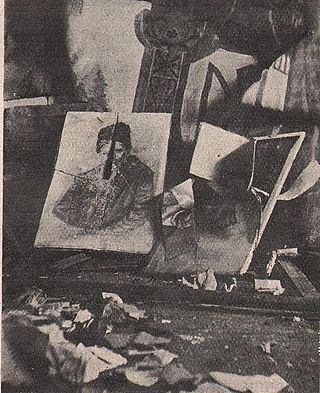
The Pacification of Ukrainians in Eastern Galicia was a punitive action against the Ukrainian minority in Poland, carried out by police and military of the Second Polish Republic from September until November 1930 in reaction to a wave of sabotage and terrorist attacks perpetrated by Ukrainian nationalists.
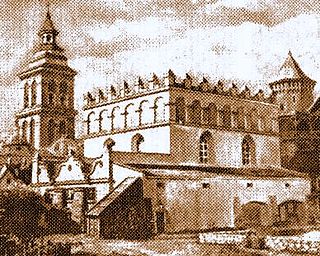
Eastern Galicia was the heartland of the medieval Kingdom of Galicia–Volhynia, currently spread over the provinces of Lviv, Ivano-Frankivsk, and Ternopil in modern western Ukraine. Along with Poles and Ukrainians, Jews were one of the three largest ethnic groups in Eastern Galicia with almost 900,000 people by 1910. From the late 18th century until the early 20th century eastern Galicia had the largest concentration of Jews of any region in Europe.

Ukrainophilia is the love of or identification with Ukraine and Ukrainians; its opposite is Ukrainophobia. The term is used primarily in a political and cultural context. "Ukrainophilia" and "Ukrainophile" are the terms used to denote pro-Ukrainian sentiments, usually in politics and literature. Ukrainophilia was severely persecuted by the imperial Russian government, and Ukrainian-language books and theater were banned. Pro-Ukrainian sentiments have gained more popularity after the Russian Invasion of Ukraine in 2022.
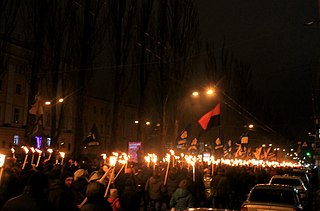
A Banderite or Banderovite was a member of OUN-B, a faction of the Organization of Ukrainian Nationalists, nicknamed "Bandera's people". The term, used from late 1940 onward, derives from the name of Stepan Bandera (1909–1959), head of this faction of the OUN. Because of the brutality utilized by OUN-B members, the colloquial term Banderites quickly earned a negative connotation, particularly among Poles and Jews. By 1942, the expression was well-known and frequently used in western Ukraine to describe the Ukrainian Insurgent Army partisans, OUN-B members or any other Ukrainian perpetrators. The OUN-B, had been engaged in various atrocities, including murder of civilians, most of whom were ethnic Poles, Jews and Romani people. Bandera was not personally engaged in the atrocities but some historians have noted that the term "Banderites" was used by Bandera’s followers themselves during the Holocaust and the massacres of Poles that resulted in the deaths of 80,000–100,000 Poles and 10,000–15,000 Ukrainians. The survivors of these atrocities also frequently defined the perpetrators as Banderites. The term was also a key propaganda term for the post-war Soviet state and more recently for Russia, often used as pejorative term for Ukrainians.
Sketches from a Secret War: A Polish Artist's Mission to Liberate Soviet Ukraine is a 2005 book by Timothy Snyder. It focuses on the interwar history of the Second Polish Republic and Soviet Ukraine through the prism of the life of Henryk Józewski. Its conclusions consist partly of new research based on the archives of the Polish military.

















